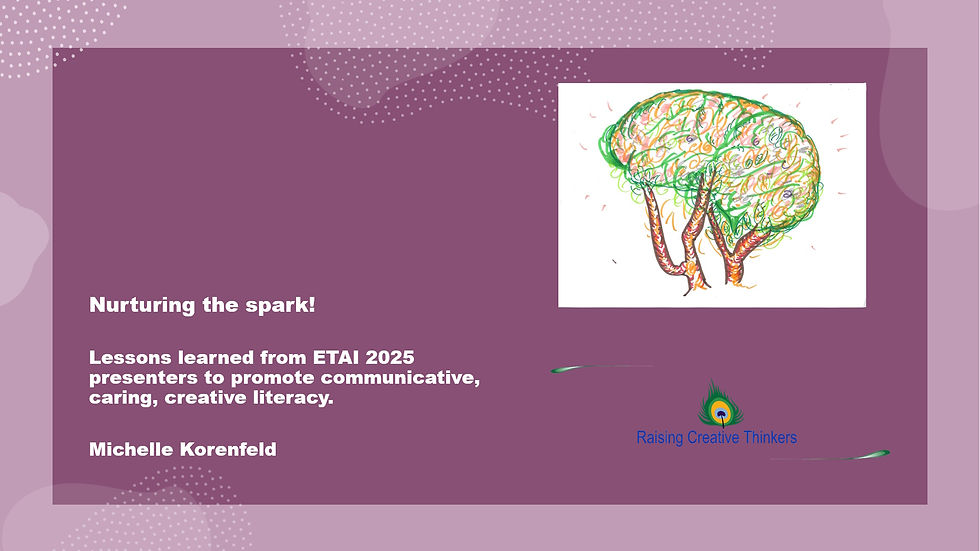The creativity wheel - Getting learning in motion
- Michelle Korenfeld

- Jun 28, 2024
- 2 min read
Updated: Apr 9
So much trial and error, choices to take, AI tools to check. Let's find the quiet creative space within the noise.
I recently interviewed professors, researchers and AI education innovators for a research asking: How to train teachers so they foster pupils' creativity? The concept that emerged was that creativity education teacher education is a connector - It weaves 10 dots, making education whole. This is more than whole child & whole teacher. This is wholesome education.
So, I envisioned a model as a whole circle. The result was the creativity wheel. Then, due to listening again to one of the interviews, I explored OECD's learning compass - Well, a full circle model, too.
I believe the creativity wheel could serve as a strategy to implement the Learning Compass in the classroom. Specifically its vision of students agency to creatively solve world problems inter-disciplinarily. There may be many other suggestions for implementing the Learning Compass. Yet this one is simple, because everything interconnects:
Coordinate - The learning compass can serve as guideline so policy makers, education leaders and teachers are coordinated.
Realm - The classroom as a realm of safety that supports the 4 Cs: Communication, Collaboration, Critical and Creative Thinking.
Enable - Teaching-learning processes enable growth, for both students and teachers. They open up possibilities.
Assets - Students' potential, personally and culturally, are seen as assets, contributing to learning.
Trans-disciplinarity - Learning that encompasses diverse disciplines fosters creativity.
Innovation- Students practice creative learning processes toward innovation, at the intersection of PBL and entrepreneurship.
Vocation - Teachers' professionalism means students' success.
Integrity - Students and teachers feel whole - in their inner world and relating to earth's living world and treasures.
Trust - Teachers trust in their students' capacity to creatively solve problems.
Yield - Teachers yield their power, to enable students' autonomy. Students conform, yet have the space to explore, experience, examine, elevate and express (The 5 E's). Education yields 21st century innovators, through growth processes.

These 10 aspects are what make educators brave, as in Efraim Lerner's interesting conversation post.
They also interweave to grow transcendence - the recent addition to Maslow's theory, as described in Phillip Alcock's inspiring blog.
Creativity education teacher education has been the mortar of early childhood education, gifted, and special ed. Yet now, especially with AI advancements, any teacher education should include the training of humanistic teachers that foster students' creativity toward innovation. The Creativity Wheel is also relevant to teacher training, because education students need to experience the practices they will guide their pupils.
Maybe now, the education we have envisioned for long is within hand's reach. We just need to connect the dots, then let it grow. And flourish. Let's navigate educational spaces in AI times holding the creativity wheel - getting learning in motion.
Michelle Korenfeld
Author of Michelangelo in the 21 Century - practical teaching inspiration - A treasure trove from which educators can choose the practices best suited for them and their students.
Lecturer and facilitator at Raising Creative Thinkers.
Contact: Korenfeld.Creativity@gmail.com





Comments